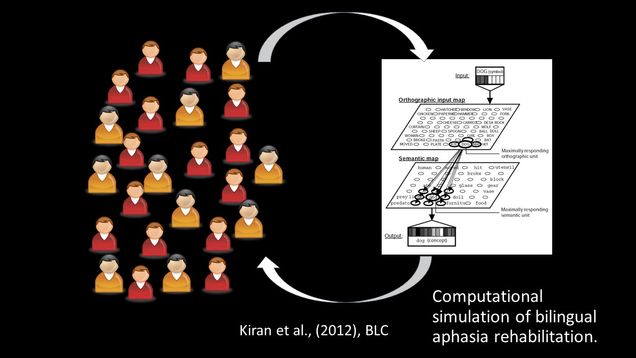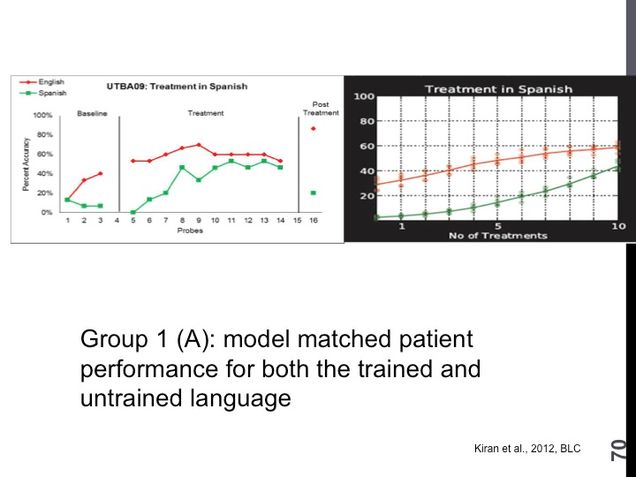Computational Modeling of Bilingual Aphasia Rehabilitation
Everything you wanted to know about Bilingual Aphasia and its Rehabilitation. Gray, T. & Kiran, S. (2014, November). Application of current theoretical models to bilingual aphasia rehabilitation. Paper presented at the American Speech-Language-Hearing Association, Orlando, FL.
Simulating Bilingual Aphasia Rehabilitation: A computational Model
The current research on bilingual aphasia rehabilitation, however, lacks specific recommendations on which languages should be trained in a bilingual aphasic individual and to what extent cross-language transfer occurs subsequent to rehabilitation. Factors contributing to the paucity of research in this area relate to the multitude of possible language combinations in a bilingual individual, the relative competency of the two languages of the bilingual individual and the effect of focal brain damage on bilingual language representation. It is, however, unfeasible to examine these issues without undertaking a large scale longitudinal study in this population.
As a potential solution, in our previous work, we developed a computational model to simulate language recovery following rehabilitation in bilingual aphasia. Specifically, we trained, lesioned, and retrained a bilingual computational model in order to systematically characterize the effect of AoA, pre-stroke language proficiency, and post-stroke naming output on the rehabilitation outcomes.

Results demonstrated that a computational model including these variables was able to capture the many complex profiles that surface in aphasia both before and after intervention. In addition, it was able to predict the extent of cross-language generalization. However, the work of using this model to fully understand bilingual aphasia rehabilitation has just begun. In the proposed project, we extend this work to now examine the predictive abilities of the model and identify the factors that can maximize cross-language generalization.
We also extend the architecture and functionality of this model, which was originally developed to simulate Spanish-English bilingual language processing, to Chinese-English which is another language combination commonly encountered in the US and has a strong theoretical and experimental foundation in computational modeling. The proposed work is innovative, because it uses a computational model to predict optimal rehabilitation protocols to facilitate the greatest amount of language recovery in bilingual aphasia. The successful completion of this project is expected to have an important impact on rehabilitation of stroke and bilingual aphasia as well as on the applications of computational modeling.
Our publications in this area include-